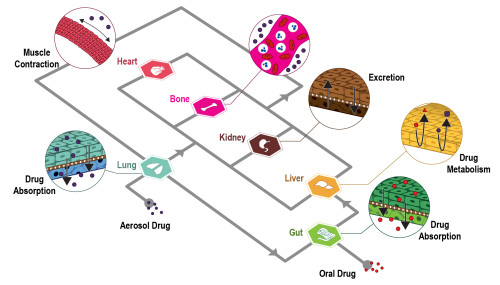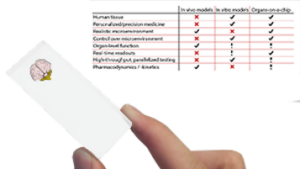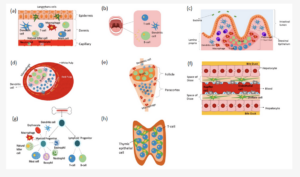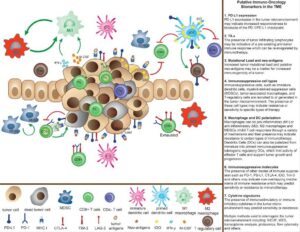Introduction
Microphysiological systems may predict drug pharmacokinetics, effectiveness and toxicity more accurately in humans. Pharmacokinetics-On-a-Chip: In Vitro Microphysiological Models are the future of emulating of Drugs ADME, this new technology has considerable promise as a tool for re-creating important physiological characteristics in humans and for developing in vitro approaches for forecasting effects on the physiology.
Pharmacokinetics-On-a-Chip have been shown to be effective in modeling important drug bioavailability mechanisms, with an emphasis on drug metabolism. They believe that organ-on-chip technology may be utilized to build innovative tests to model and predict important physiological responses involved in medication bioavailability, effectiveness, and toxicity.

Microphysiological systems might be beneficial for supporting and accelerating efforts in rare illnesses, stratified medicine, and nanomedicine, sectors that are garnering industry and public attention, in addition to enhancing research and development efficiency in general.
How to culture vascularized & immunocompetent 3D models in a standard Multiwell
Abstract of Pharmacokinetics-On-a-Chip: In Vitro Microphysiological Models for Emulating of Drugs ADME
The authors state that “Despite many ongoing efforts across the full spectrum of pharmaceutical and biotech industries, drug development is still a costly undertaking that involves a high risk of failure during clinical trials. Animal models played vital roles in understanding the mechanism of human diseases.
However, the use of these models has been a subject of heated debate, particularly due to ethical matters and the inevitable pathophysiological differences between animals and humans. Current in vitro models lack the sufficient functionality and predictivity of human pharmacokinetics and toxicity, therefore, are not capable to fully replace animal models.
The recent development of micro-physiological systems has shown great potential as indispensable tools for recapitulating key physiological parameters of humans and providing in vitro methods for predicting the pharmacokinetics and pharmacodynamics in humans.
Integration of Absorption, Distribution, Metabolism, and Excretion (ADME) processes within one close in vitro system is a paramount development that would meet important unmet pharmaceutical industry needs. In this review paper, synthesis of the ADME-centered organ-on-a-chip technology is systemically presented from what is achieved to what needs to be done, emphasizing the requirements of in vitro models that meet industrial needs in terms of the structure and functions.”
References
Ramadan Q, Fardous RS, Hazaymeh R, Alshmmari S, Zourob M. Pharmacokinetics-On-a-Chip: In Vitro Microphysiological Models for Emulating of Drugs ADME. Adv Biol (Weinh). 2021 Jul 29:e2100775. doi: 10.1002/adbi.202100775. Epub ahead of print. PMID: 34323392.



